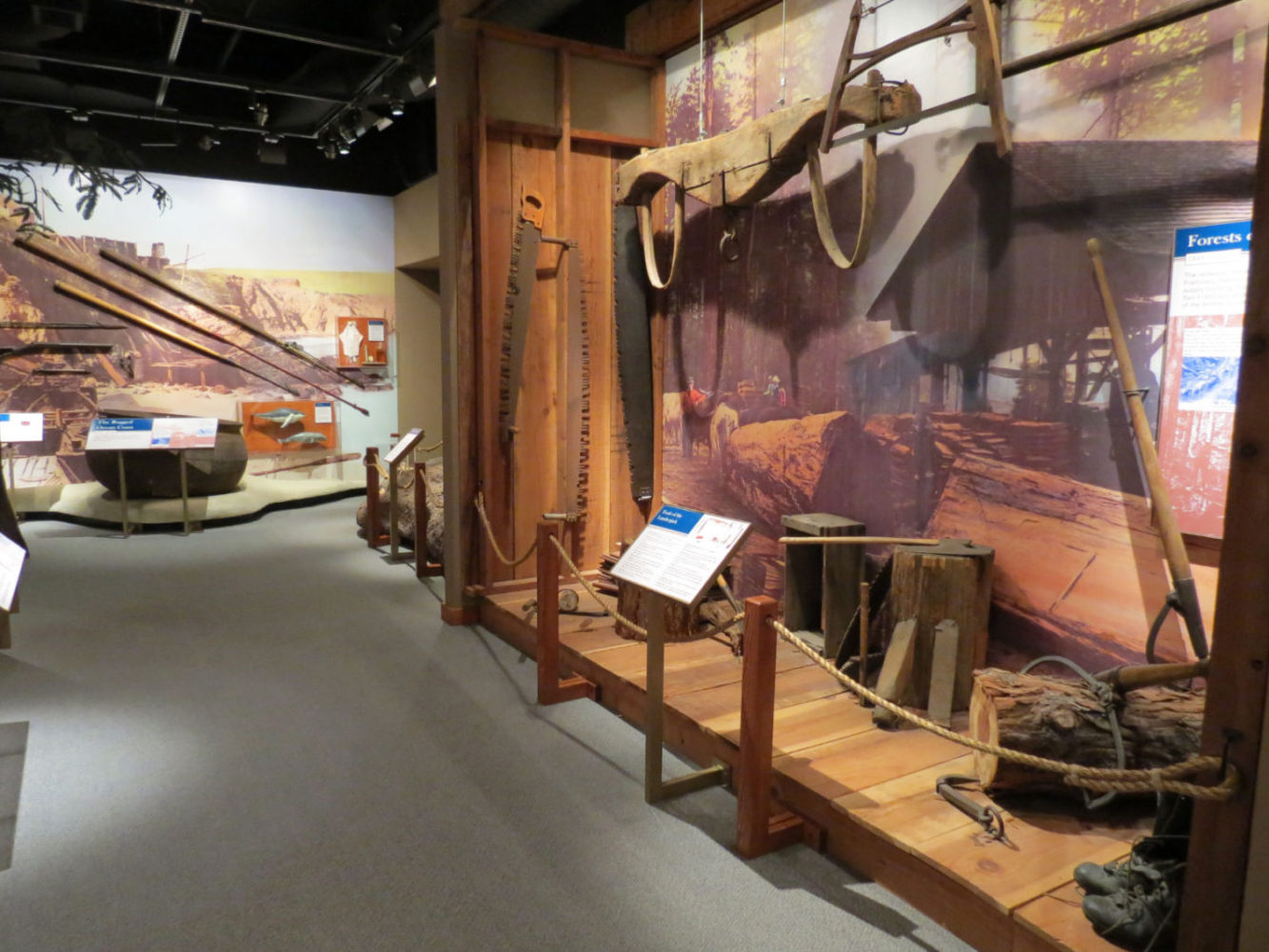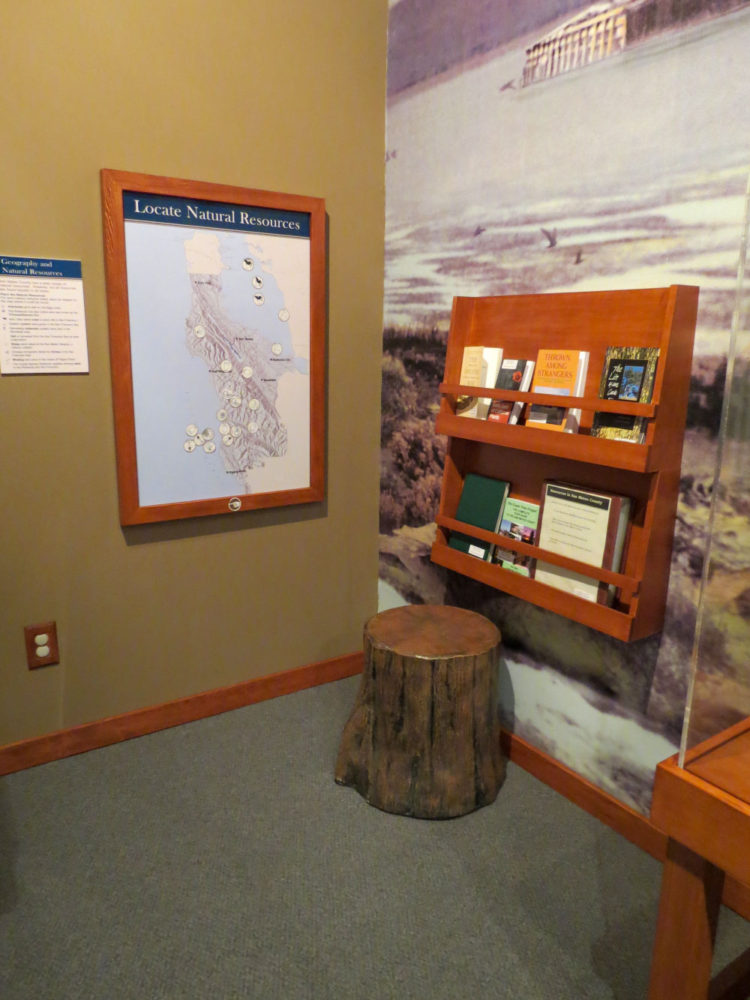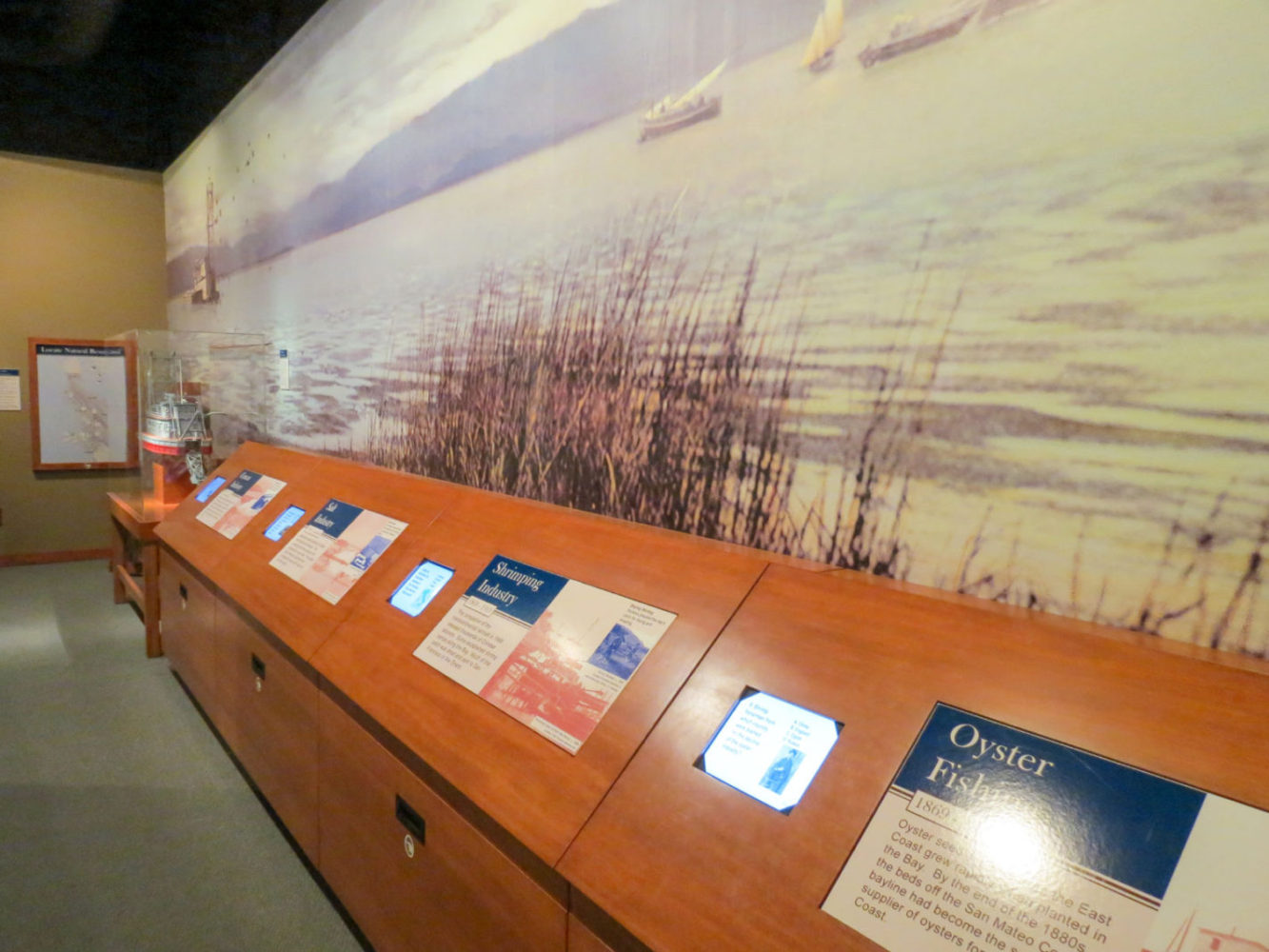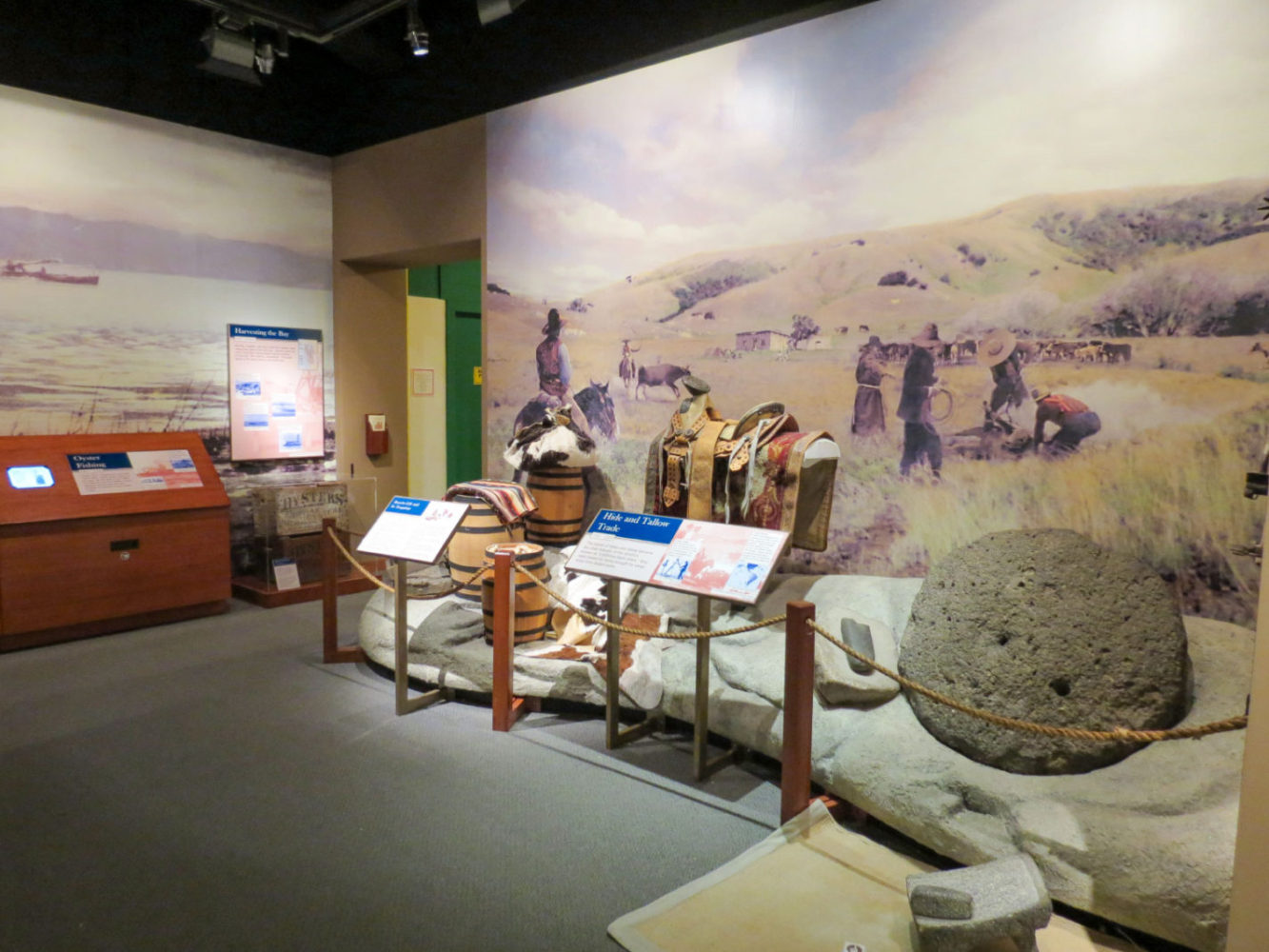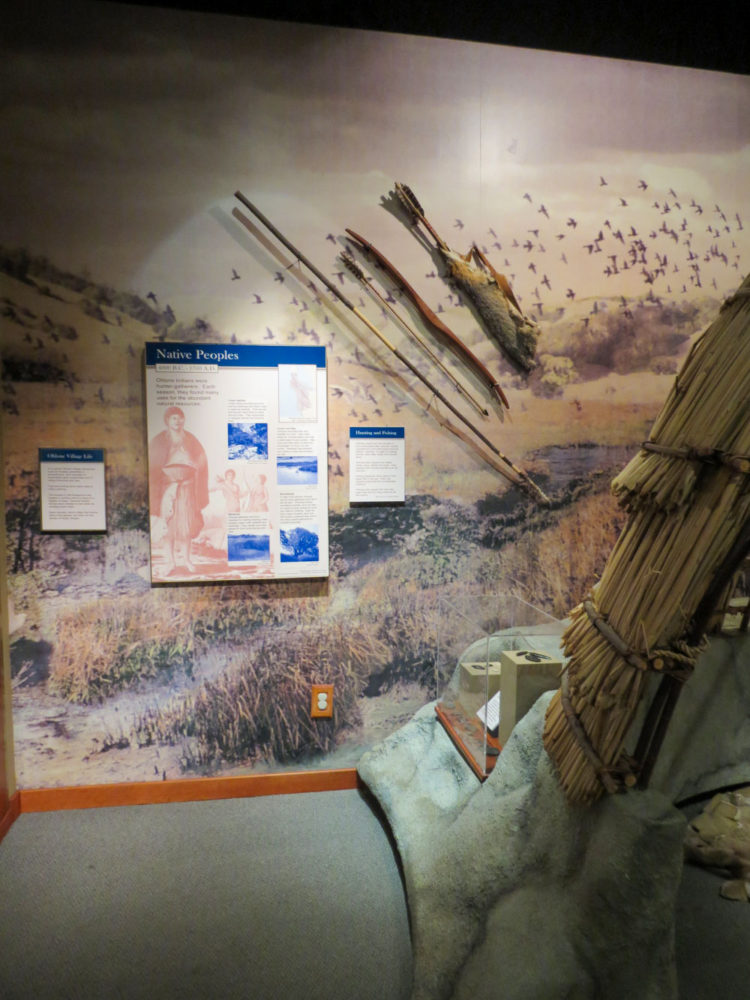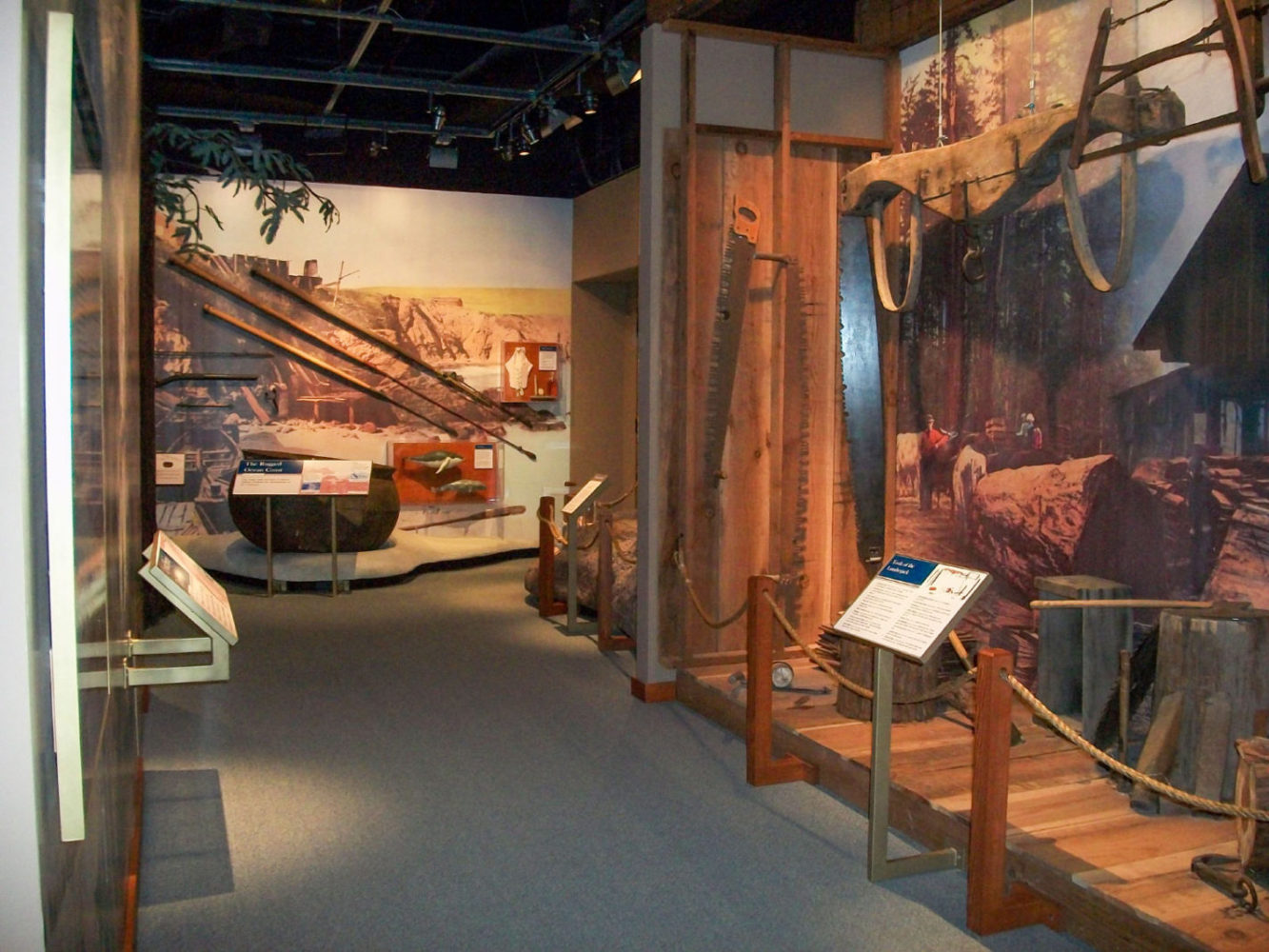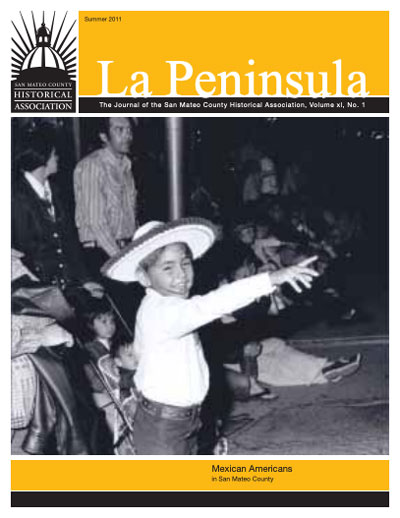The Natural Resources that Built San Francisco
Exhibits
Nature's Bounty
Nature’s Bounty explores how the residents of the Peninsula have used its natural resources.

The Ohlone used willow and tule to build their houses.
F resh water, redwood, shrimp and rich soil are among the many natural resources of the Peninsula. From the Ohlone to the Americans, people have used the area’s many natural resources to support their daily life. The exhibit highlights how the Peninsula’s natural resources supported the development of San Francisco, the most important city in the West in the mid-nineteenth century.
Explore the Exhibit
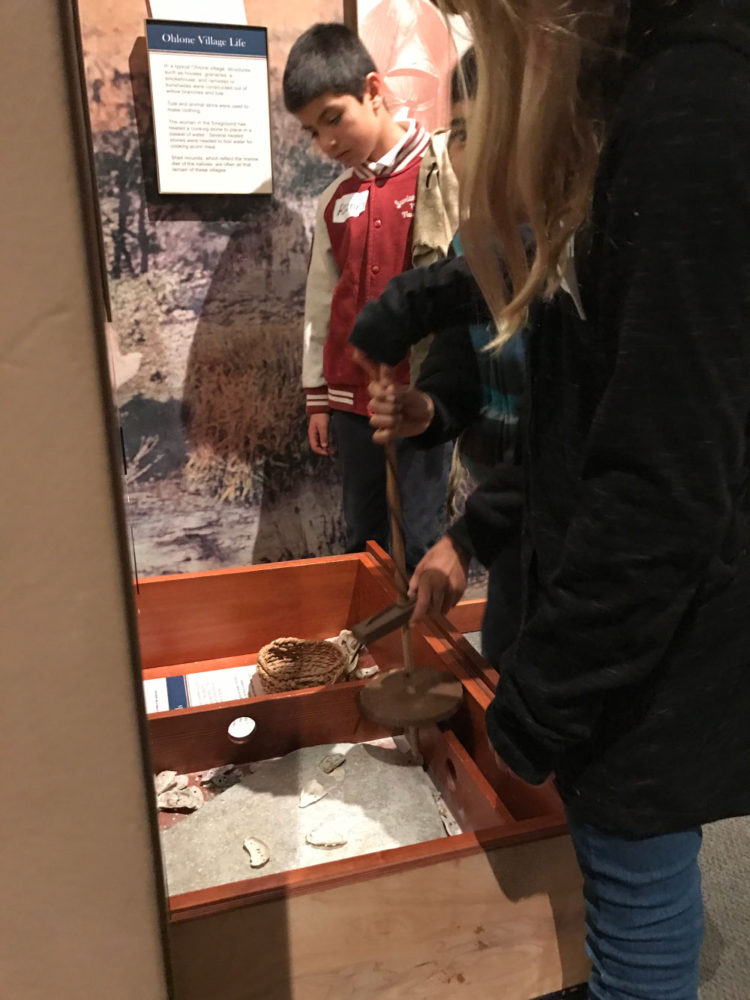
People Who Used the Resources
The Ohlone
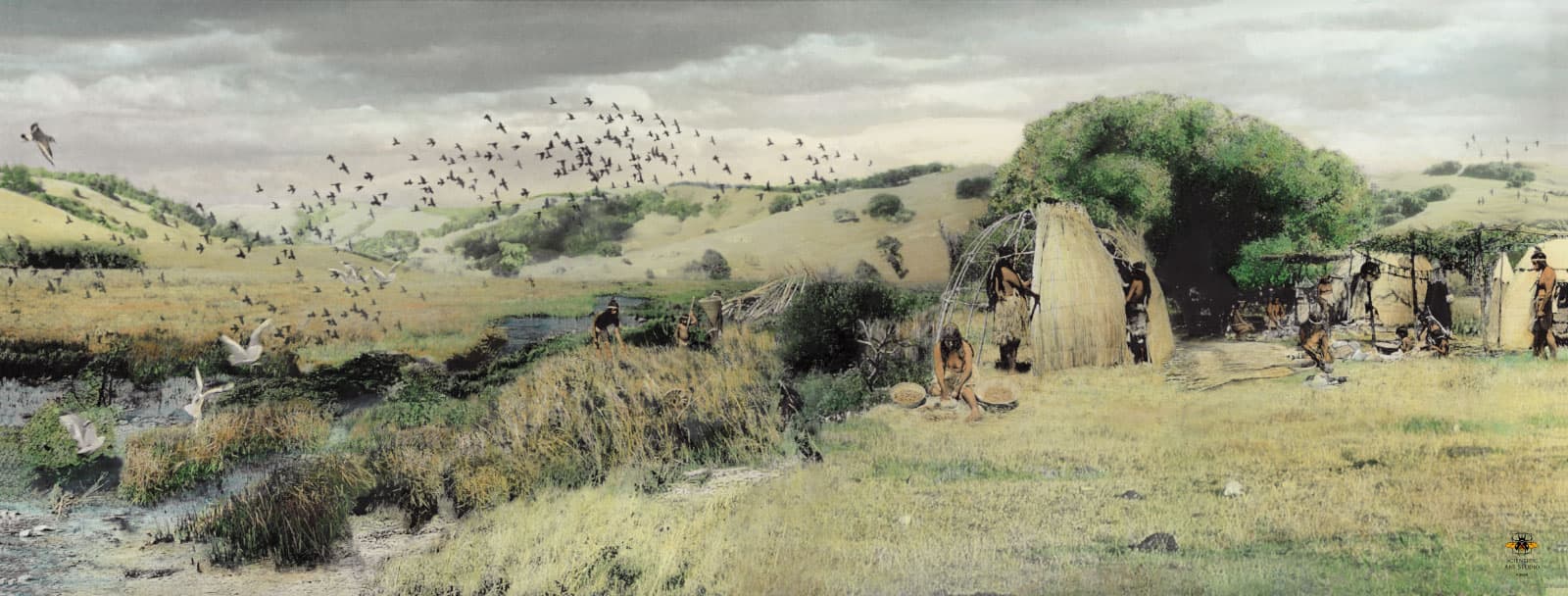
The local Native Americans were hunters and gatherers. Each season they found many uses for the abundant resources. Plants provided materials for baskets, shelters, clothing and medicine. Shellfish were harvested for food, ornamentation and trade. Woodland animals were hunted for meat for food, bones for tools and hides for clothing.
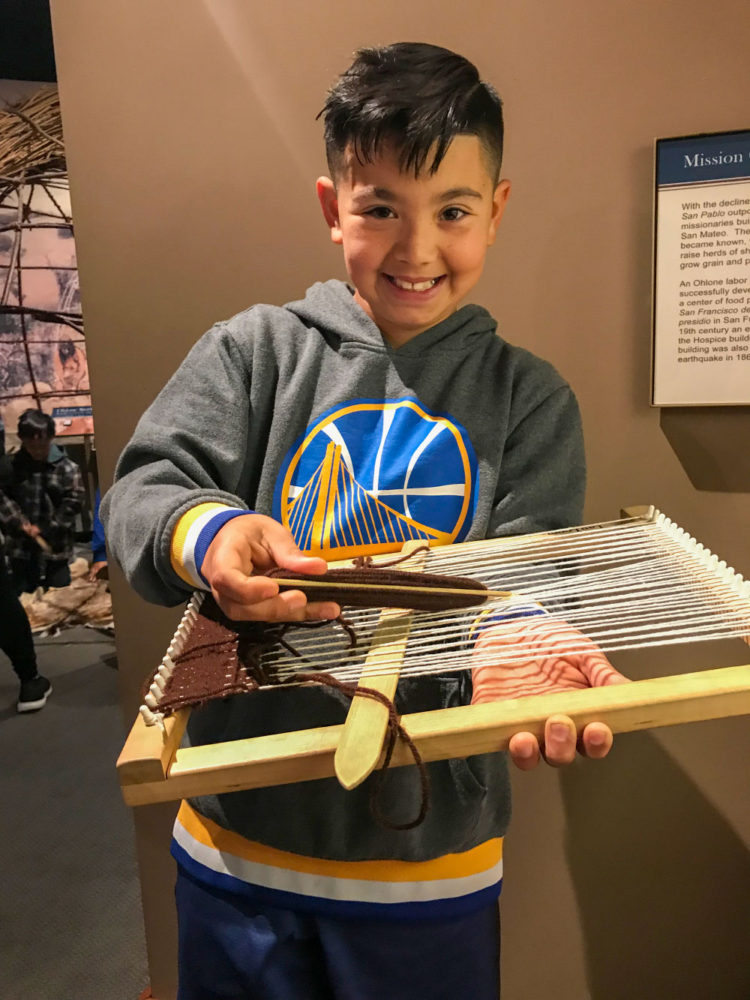
The Spanish
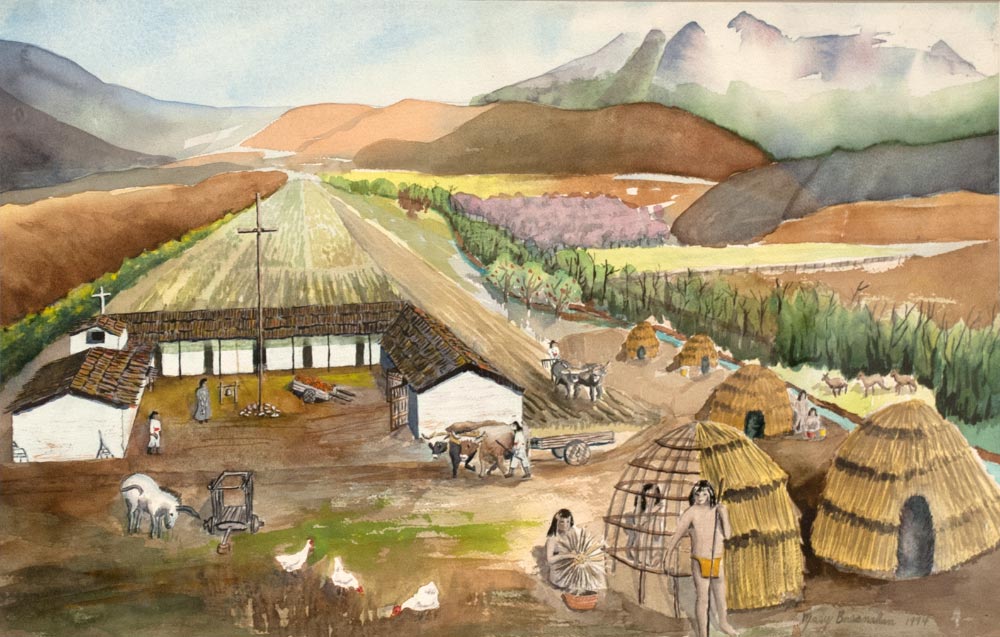
Asistencia by Mary Breshahan
The fertile soil, fresh water and grazing land of the Peninsula led missionaries to establish farms to support Misión San Francisco de Asis (Misson Dolores). Ohlone and other indigenous people labored on the mission farms to grow food and raise sheep.
The Mexicans
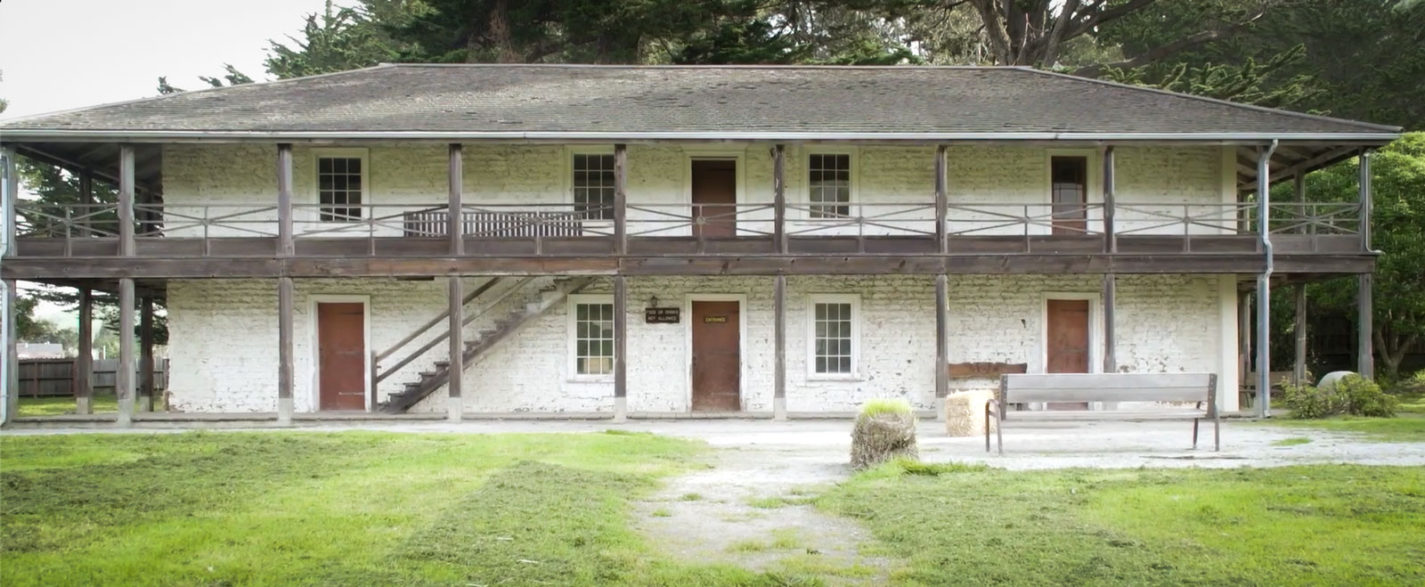
Francisco Sanchez built this adobe on his Rancho San Pedro in 1846.
Mexican independence led to issuance of large land grants to individuals. Rolling, open hills provided land necessary for grazing large herds of cattle, raised for their hides and tallow. Hides and tallow were traded for items brought by cargo ships from distant ports.
The Americans
After the Gold Rush, Americans used local resources to develop San Francisco.
Bayside Industries
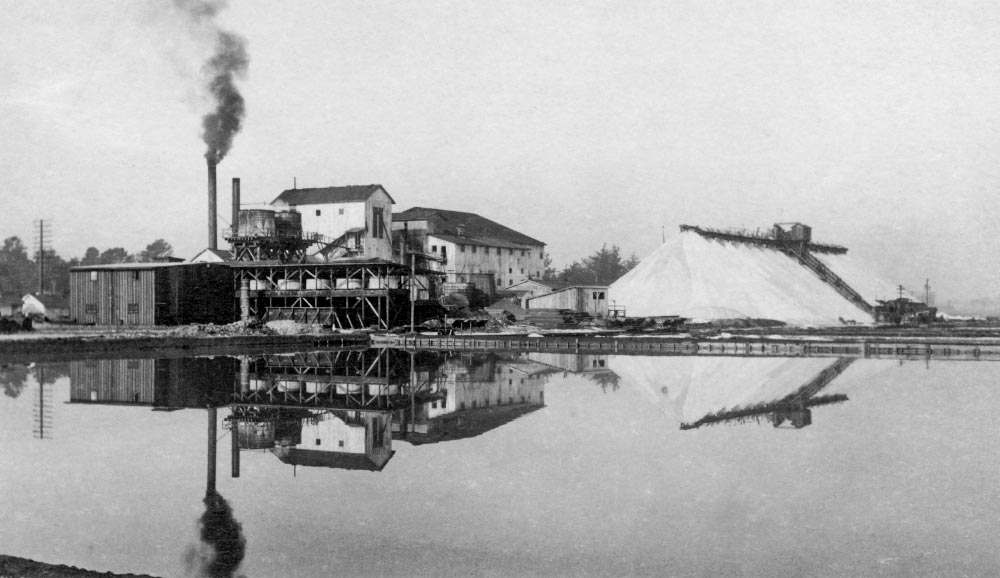
Leslie Salt Company was a major bayside industry.
Shrimp, oysters, salt and shells for cement were resources taken from the bay. Oysters were the most important consumable marine product during the 19th century, worldwide. The best beds in the West were along the San Mateo County Bayline. (La Peninsula: Summer 2015 on shrimp camps).
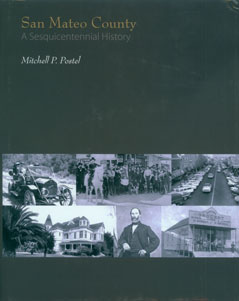
Forests of Gold
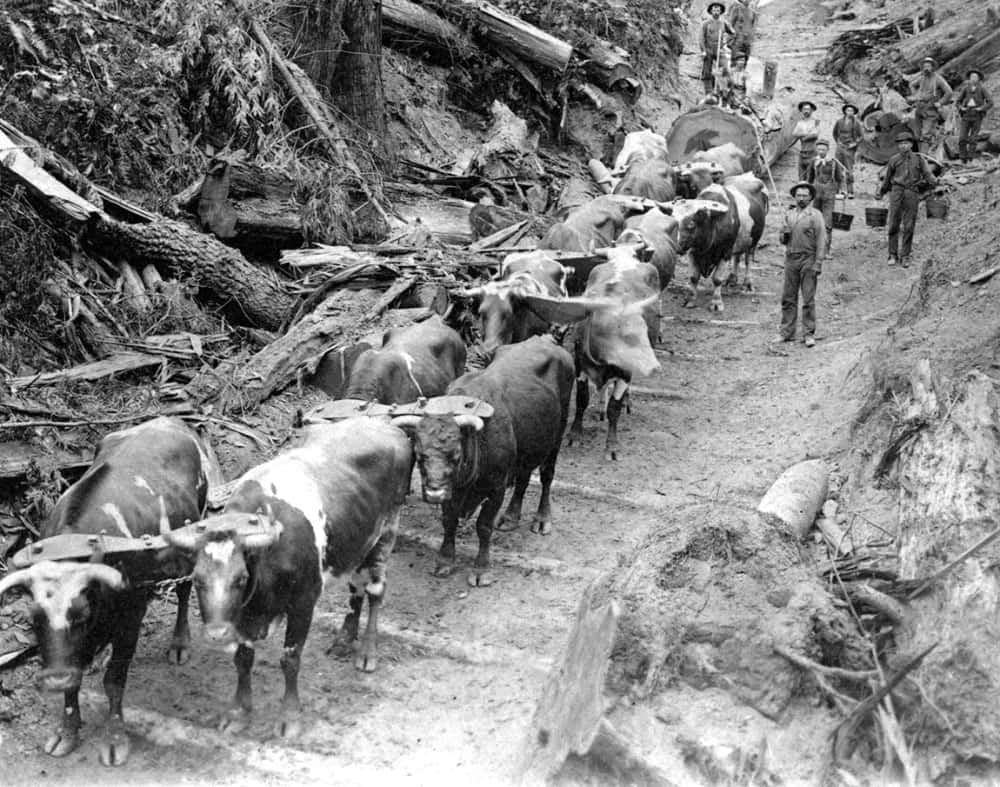
Hauling redwood on a skid road.
The redwood forests down the San Francisco Peninsula were harvested to supply building materials for rapidly growing San Francisco and the mining communities of the Mother Lode.

Water for a Thirsty City

Workers who built the Crystal Springs Dam.
Without water San Francisco could not become a great city. The Spring Valley Water Company created a 20,000-acre watershed that was crucial to the growth of the City and the development of the Peninsula. (La Peninsula: Spring 2018)
Peninsula Agriculture
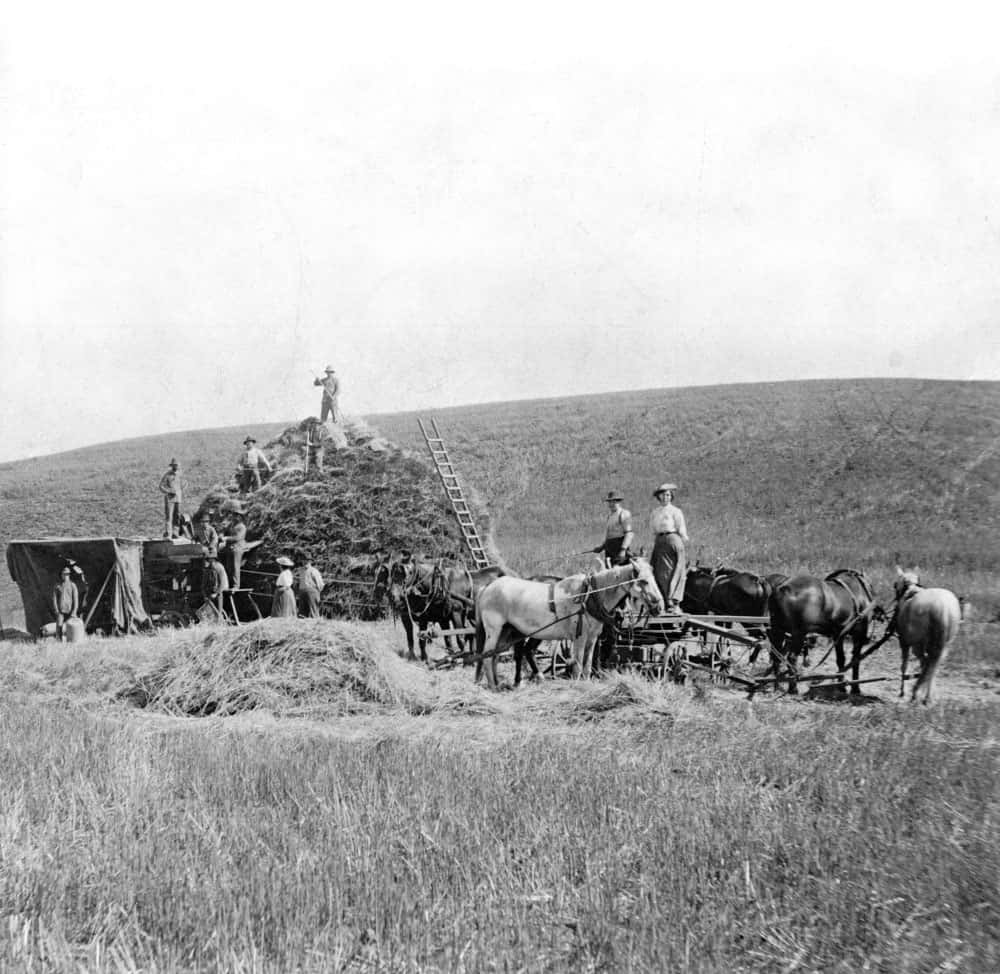
Threshing barley and oats near La Honda.
The fertile valleys of the Peninsula gave rise to a successful agricultural industry, yielding grain, produce, commercial flowers and dairy products. (La Peninsula: Winter 2014)
Rugged Ocean Coast
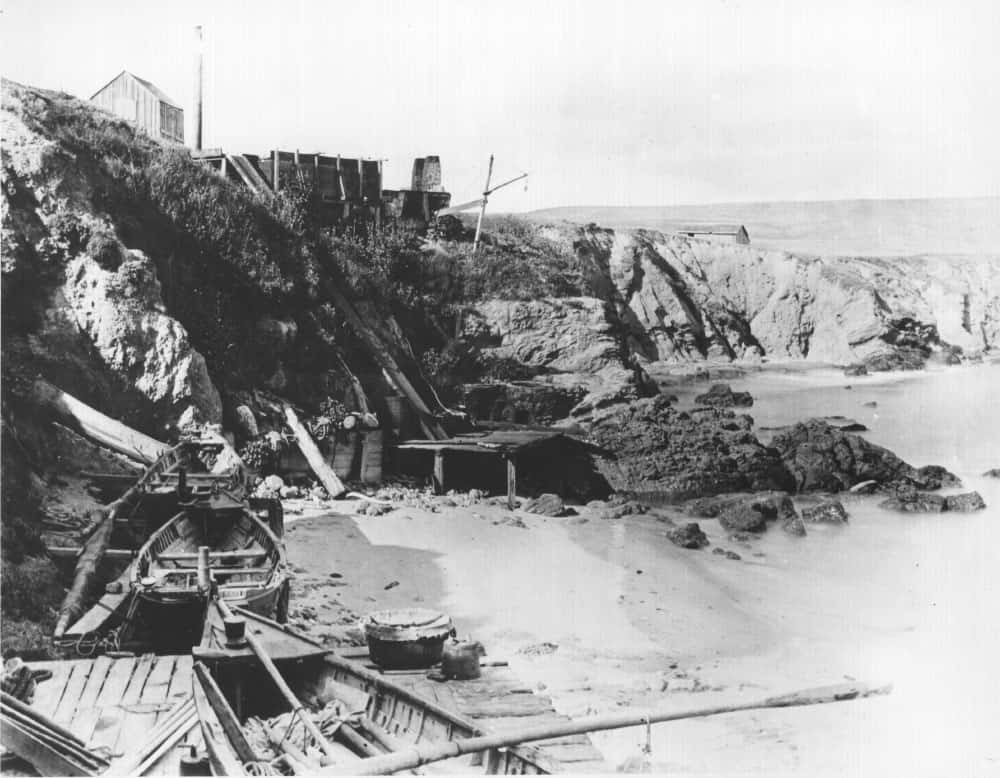
Whaling station near Pescadero.
Hunted for their oil, bone and other byproducts, humpback and grey whales were butchered at stations at Pillar Point and Pigeon Point.
History Museum Quiz
Take our quiz and test your knowledge on Nature’s Bounty.



